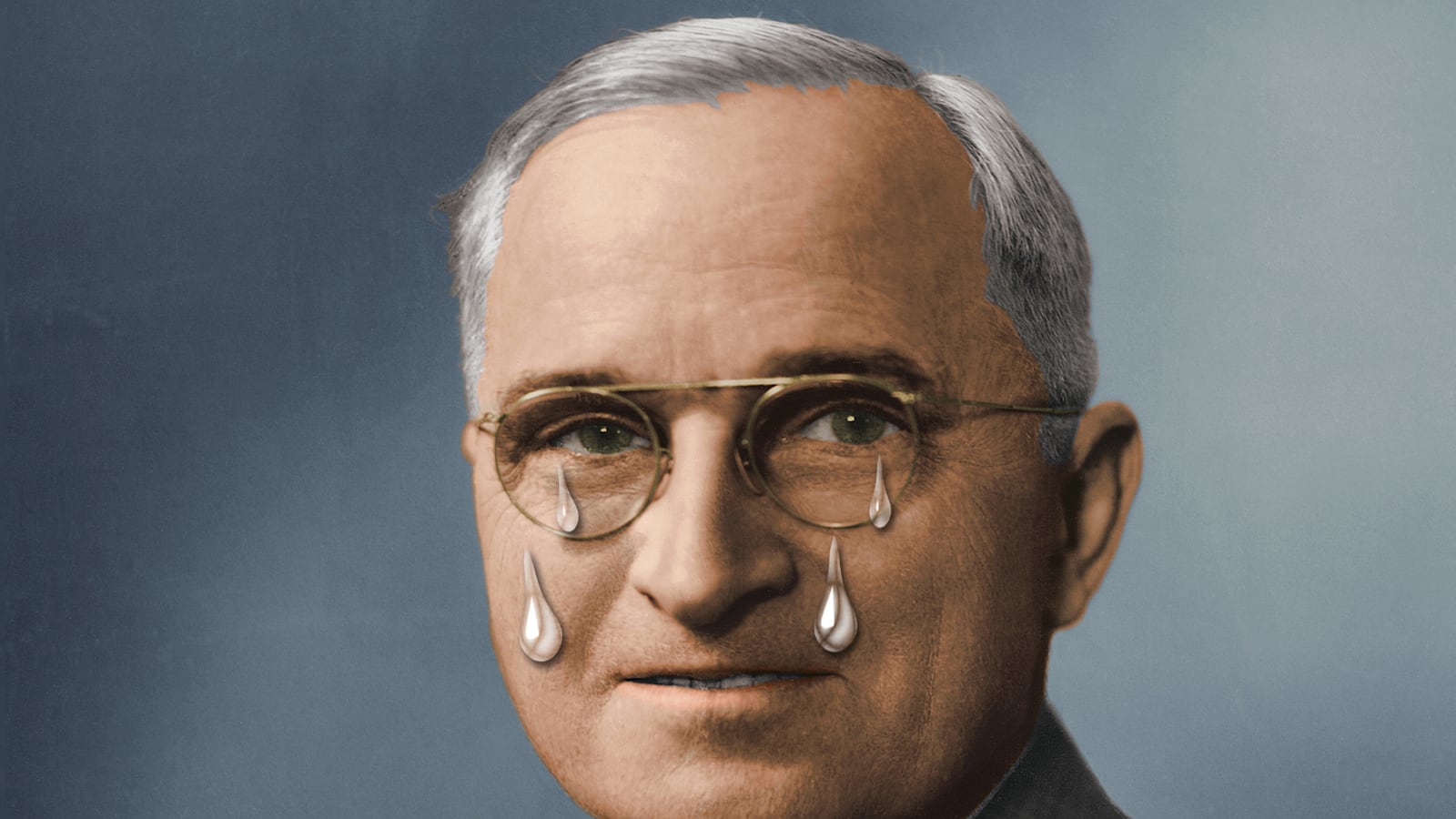“There is no pleasure in the documentation of wrongdoing. Certainly the VA at the highest level must realize that they are sitting on a ticking time bomb, where if not defused by honest actions, it will be revealed that the largest health care system to be fatally flawed and undeserving of the trust of patients.”
—Dr. Edward Adelstein, before the House Committee on Veterans’ Affairs Subcommittee On Oversight And Investigations, March 11, 1999.

Memorial Day is a time when we remember and honor our soldiers who were killed on the battlefield and fought in our wars. We don’t usually think of it as a time to commemorate veterans who were killed in the veterans’ hospitals that are supposed to take care of them.
Maybe it’s time.
In April it was reported that a Department of Veterans Affairs hospital in Phoenix kept a secret waiting list that may have led to dozens of preventable deaths. Several other facilities have come under fire and The Daily Beast recently published an exclusive on more problems and cover-ups at the Albuquerque VA hospital, based on the testimony of a whistleblower. Currently, The VA’s Office of the Inspector General (OIG) is investigating the allegations and hasn’t yet found any deaths in Phoenix linked to wait times.
I doubt they ever will.
Needless deaths at a VA hospital. Cover-ups. Whistleblowers. An ineffective VA Inspector General. All of this has happened before and will probably happen again.
It happens because the VA hospitals still have in place a system where the most dangerous person in the system is an honest man, the Inspector General is a lapdog not a watchdog, and people at the top are not punished for their misdeeds.
Add to that a lack of funding due primarily to Republican opposition, an increasingly dysfunctional private medical system, vanishing pension funds that put more veterans in the system—and you have a recipe for disaster.
I’m not a veteran and I certainly have a biased view of the latest VA scandal—not to mention a terrible sense of deja vu in the unfolding news.
In 1992, my father, Eddie Adelstein, became part of the epicenter of an investigation into the mysterious deaths of over 40 veterans at the Harry S. Truman hospital in Columbia, Missouri. It is quite likely that one staff member of the hospital murdered these patients.
There were lessons that should have been learned then. They were not.
In the summer of 1992, when Dr. Adelstein was the acting Chief of Staff at the hospital, he became aware that nurses were complaining that an increased number of deaths were associated with a single male nurse, almost of them in the 4E ward.
He asked Dr. Gordon Christensen, a trained hospital epidemiologist and his research colleague, to review the data and establish statistical correlations. They, along with Dr. Earl Dick, the Chief of Staff, determined that these deaths were associated with a single nurse, Richard Allen Williams, and all evidence pointed strongly to the murdering of veterans within the hospital.
While some of the patients had been seriously ill, many of them were not in mortal danger—at least not from their illnesses. Some were about to be discharged from the hospital. And yet they were dying.
The doctors and researchers wanted to call in the FBI, or local police, or both. Their superiors in the VA system told them to keep quiet. While Dr. Christensen and others grew increasingly frantic as they became convinced that Williams was killing patients, the hospital administration and regional VA officials refused to call in police or remove Williams.
The OIG reluctantly carried out a delayed investigation, and produced a sham report that was rightfully criticized by the Government Accountability Office. In fact, in May of 1998, the GAO declared the OIG report was misleading. “Misleading” appears to be Washington euphemism for “damn lies”; the Inspector General had presented no evidence and done no investigation.
The GAO condemned the report and the OIG harshly: “The conclusion that no evidence of an intentional cover-up had been found was not consistent with the inquiry conducted and was misleading; OIG failed to comply with its own reporting policies concerning completeness and accuracy by presenting statements that were not supported by the evidence contained in OIG files, including reference to a discussion that the Special Inquiry never verified….The confidentiality of the staff physician who had made the allegations of a cover-up was breached on at least three occasions.”
The FBI and local authorities investigated nurse Williams on charges of first-degree murder, but they could not prove their case and the charges were dropped.
However, in August 1998, a civil suit was brought against the United States of America by the widow of one of the patients who had died in 4E. The woman was Helen Havrum. United States District Judge Nanette Laughrey ruled for the plaintiff, awarding her $450,0000.
The judge stated at the time, “Mrs. Havrum, I believe that Nurse Williams killed your husband with an injection of codeine one hour before his death. I am convinced the VA staff was alerted to the relationship between Richard Williams and deaths prior to his final admission.” The judge chastised the VA for failing to protect Mr. Havrum, when they knew or should have known that he was being placed in grave danger.
It was later revealed that suspicious deaths also occurred at the nursing home in Ashland, Missouri, where Williams had worked after leaving the VA.
The 4E deaths became the subject of a congressional investigation in 1999. Before the House Committee on Veterans’ Affairs, Dr. Adelstein and others testified as to what had happened and implored Congress to do something about the situation.
If life were a movie, the VA doctors who discovered the series of suspicious deaths and made sure that the nurse was removed from patient care—they would be heroes and promoted for their diligence and devotion to duty. As it was, all of them were subject to reprisals, harassment, and the Veterans’ Administration upper echelon made every effort to get them fired and make their life unpleasant—despite their whistle blower status.
In his testimony before Congress in March of 1999, Dr. Adelstein spoke about the roots of the problem and why cover-ups and malfeasance dogged the VA system.
“It is clear that for cover-ups to occur, no actual spoken conspiracy is necessary. No matter how heinous the crime, and the resultant cover-up, everyone knows that if you tell the truth, you will be punished, but if you take part in the cover-up you will be rewarded by promotion and considered a loyal team player with a bright future within the VA system….If these people are allowed to go unpunished, rich in retirement benefits and bonus awards and the truth tellers punished, this will stand as a critical example which will discourage truth and reward deception. This behavior needs to be rapidly reversed.”
Finally, Dr. Adelstein ended his testimony with a call to action: “I ask you in the name of justice to pursue all aspects of these events…There will never be a stronger case with this degree of documentation that will send a signal to the VA, the FBI, and the Inspector General that it is not business as usual. This is an opportunity to redefine government and justice. I can only hope that you and the committee have the strength and will to pursue these actions.”
Congress never had the strength or the will to pursue those actions. And recently, they haven’t had the good will to allocate the budget to take care of our veterans, forcing many of them into a massively overloaded medical system.
One VA employee, who fearing reprisals, spoke on background, summarized the problems as follows.
“Yes, there are systematic flaws with the VA. Two years ago the GAO pointed out waiting time problems. But you can’t simply blame Shinseki. Try blaming the folks in Washington, especially the Republicans, who refuse to fund more money for vets although they were fine bankrolling the Iraq war. In addition, as private insurance companies triage their patients and corporations welch on their pension funds, the number of veterans in our system has swollen. Before blaming the Obama administration, blame Congress, which won’t fund the VA, blame corporations, which don’t take care of their retired employees, and blame the Inspector General’s Office of the VA, which is asleep at the wheel.”
He also pointed out that while there are many problems with the VA, under the reforms implemented by Ken Kizer, service has improved and some hospitals provide excellent care.
Dr. Christensen, who left the VA in 2003, laments the failure of Congress to perform oversight over the system. “No matter which party is in control, Congress simply exploits VA problems for political coinage and moves on. The current state of events makes me sad. Nothing has been done since 1992. The Inspector General not only fails to do their job, because they are part of the VA and lack independence, they also colluded in the cover-ups in the past. And while congressional oversight has been abysmal, the Obama administration has been particularly poor at protecting whistle-blowers.”
He says the lessons that should have been learned from the VA murders in 1992 are very simple. Officials have to be accountable for their actions; there must be a system in which honest people who strive to do their job and tell the truth are rewarded—not punished. Finally, there must be at truly independent VA Inspector General that protects the truth-tellers, and makes sure those who do wrong are punished.
Until those things take place, there will continue to be more needless deaths at the veterans’ hospitals.
It’s an old truth but nonetheless true: Only when we remember the tragedies of the past can we prevent them from happening again. That is part of what Memorial Day is all about: remembering. In the Veterans’ Administration, 1992 appears to have been long forgotten—along with the 40 or more veterans who were probably murdered, and the doctors on the ground that fought fiercely to avenge them and protect those in their care.
Cineri gloria sera est




